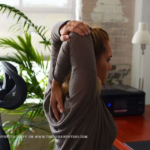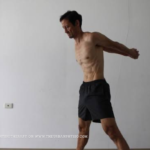In recent years, there has been a major shift in how people approach fitness. While traditional workouts focus on building strength, endurance, or achieving aesthetic goals, a new trend is gaining momentum: somatic exercise. This form of fitness is unique in that it emphasizes emotional awareness, inner connection, and releasing tension stored in the body through mindful movement. As more people prioritize holistic well-being, somatic exercise offers a fresh, healing approach to fitness that has the potential to transform not only your body but also your mental health.
What Is Somatic Exercise?
Somatic exercise is an emotion-led movement practice that aims to increase body awareness and facilitate emotional release. The term “somatic” comes from the Greek word soma, meaning “body,” and in this context, it refers to exercises that connect the mind and body in a way that promotes healing from the inside out. Rather than pushing the body to its limits, as many traditional exercises do, somatic workouts focus on slow, deliberate movements that help individuals tune into how their bodies feel and respond.
These exercises are designed to release stored tension, reduce stress, and improve overall well-being by helping individuals become more attuned to their emotions. This method is ideal for those dealing with trauma, anxiety, or chronic stress, as it offers a safe and effective way to process and release emotional tension.

How Somatic Exercise Benefits Mental Health
1. Emotional Release Through Movement
Somatic exercises allow individuals to express and release emotional energy that may be trapped in the body. This is important because emotions like stress, fear, and anxiety often manifest physically, leading to muscle tightness, fatigue, or even pain. By becoming more aware of these physical sensations, individuals can release this emotional tension, leading to improved mental clarity and emotional resilience. This mind-body connection is a powerful tool for processing unresolved emotions.
2. Reduction of Stress and Anxiety
Unlike high-intensity workouts that can sometimes exacerbate stress, somatic exercises promote relaxation and mindfulness. These gentle movements activate the parasympathetic nervous system, which helps calm the body and mind. Research shows that mindful movement, such as somatic exercises, can lower cortisol levels, the hormone responsible for stress. As a result, individuals may experience fewer symptoms of anxiety and feel more centered after engaging in somatic practices.
3. Increased Mindfulness and Self-Awareness
A key component of somatic exercise is its focus on mindfulness. By practicing this type of movement, individuals learn to be present in their bodies, listen to their physical sensations, and understand how their emotions are connected to their physical state. This increased self-awareness can lead to better emotional regulation and a deeper sense of self-compassion. As mental health experts suggest, mindfulness practices, like those found in somatic exercise, can enhance overall mental well-being by reducing rumination and increasing emotional resilience.
4. Improved Sleep and Relaxation
The calming effects of somatic exercise can extend beyond the practice itself. Many individuals report that they sleep better after incorporating these gentle, mindful movements into their routine. By reducing physical tension and calming the mind, somatic exercises can help alleviate insomnia and promote deeper, more restorative sleep. Improved sleep, in turn, supports better mental health, allowing individuals to manage stress and emotions more effectively during the day.
5. Healing Trauma Through Body Awareness
Somatic exercise has been increasingly recognized as a powerful tool for healing trauma. Trauma can often result in dissociation from the body or a sense of disconnection from physical sensations. Somatic practices encourage individuals to reconnect with their bodies in a safe and controlled environment, helping to re-establish a sense of control and safety. Therapists often use somatic techniques to help trauma survivors process their experiences through the body, offering a pathway to emotional healing and recovery.
How to Get Started with Somatic Exercise
If you’re curious about incorporating somatic exercises into your routine, here are a few tips to get started:
Start Slow: The beauty of somatic exercise is that it’s accessible to everyone, regardless of fitness level. Start with slow, gentle movements, and focus on tuning into your body.
Practice Mindfulness: While performing the exercises, pay attention to how your body feels. Notice any areas of tension or discomfort, and allow yourself to explore those sensations without judgment.
Incorporate Breathing: Deep, controlled breathing can enhance the effects of somatic exercises. Try to synchronize your breath with your movements to promote relaxation and awareness.
Explore Guided Sessions: There are many online resources and classes that focus on somatic exercises. Consider joining a class or following along with a guided session to learn the basics.
The Science Behind Somatic Exercise
Somatic exercise is rooted in neuroscience and psychology. Studies have shown that trauma, stress, and negative emotions can get “trapped” in the body, leading to physical symptoms such as chronic pain, muscle tension, or fatigue. This is often referred to as “body memory,” where the body holds onto unresolved emotional experiences, even after the mind has processed them.
By consciously moving and paying attention to the body’s sensations, somatic exercise allows the practitioner to become more aware of these stored emotions. As they release the tension, they also release the underlying emotional energy. This process can help alleviate symptoms of anxiety, depression, and trauma. It also promotes the activation of the parasympathetic nervous system, which is responsible for the body’s rest and digest functions. Activating this system through mindful movement helps to lower stress levels and encourages relaxation.
How to Incorporate Somatic Exercise Into Your Routine
If you’re looking to get started with somatic exercise, here are a few tips:
1. Find a Quiet Space: Somatic exercise requires a calm and focused environment. Set aside a quiet space where you can move freely without distractions.
2. Start with Gentle Movements: Begin with slow, deliberate movements, such as neck stretches, shoulder rolls, or deep breathing. Pay attention to how each part of your body feels.
3. Focus on Breathwork: Deep breathing is a key component of somatic exercise. Synchronize your movements with your breath to enhance relaxation and body awareness.
4. Use Guided Resources: There are many online classes, books, and videos available that guide you through somatic exercises. Consider starting with a guided session to help you understand the basic principles.
5. Be Patient and Persistent: Like any form of exercise, somatic practice takes time. Be patient with yourself, and allow your body to gradually release tension and stored emotions.
Somatic Exercise and Its Growing Popularity
The popularity of somatic exercise is not just a passing trend—it represents a larger cultural shift towards prioritizing emotional and mental well-being alongside physical fitness. More people are recognizing the importance of holistic health, and as a result, fitness routines that combine the mind and body are becoming more mainstream. The COVID-19 pandemic has also played a role in this shift, as many individuals began seeking ways to manage their mental health from home. Somatic exercise, which can be done in a small space with little to no equipment, offers a solution for those looking to stay physically active while also taking care of their mental and emotional health.
In 2024, somatic exercise has seen a 2,120% rise in searches, according to studies in the UK. This dramatic increase reflects the growing demand for fitness routines that go beyond physicality and address emotional wellness.
Conclusion: A New Era of Emotional Fitness
As our understanding of fitness evolves, it’s clear that well-being isn’t just about aesthetics or strength. Emotional health plays a crucial role in how we move, feel, and function in our daily lives. Somatic exercise is a perfect example of how the fitness industry is adapting to meet the needs of individuals who seek not just physical improvement but emotional healing and mental well-being.
By focusing on mindful, emotion-led movements, somatic exercise offers a powerful way to release emotional tension, reduce stress, and foster a deep connection between the mind and body. Whether you’re new to fitness or looking to complement your existing routine with a more holistic approach, incorporating somatic exercise can provide transformative benefits for both your body and mind.





